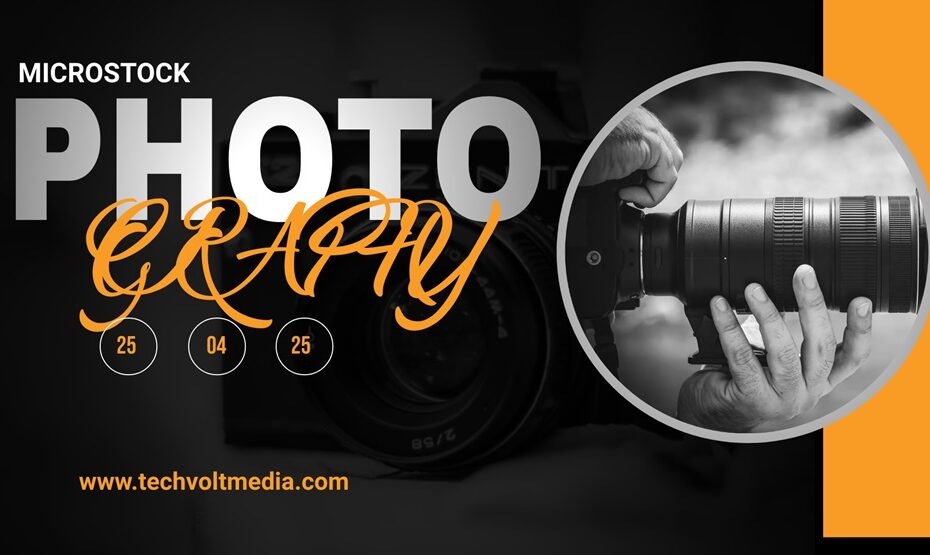Let’s assume you’re on a random Tuesday, scrolling through social media, and a photo of a majestic mountain range stops you dead in your tracks. It’s breathtaking – a perfect encapsulation of nature’s raw beauty. But here’s the kicker: the photographer behind that image might be earning money from it every single day, even while you’re casually admiring it on your phone. That’s the fascinating world of microstock photography, a booming industry that allows anyone with an eye for capturing a moment to turn their passion into a profitable side hustle, or even a full-time career.
What is Microstock Photography, Anyway?
Microstock photography is a branch of the stock photo industry that operates on a fundamentally different model compared to traditional stock agencies. Here’s the breakdown:
- Accessibility: Microstock platforms welcome a wider range of contributors, including hobbyists and aspiring photographers, alongside seasoned professionals.
- Pricing: Photos are sold at much lower individual prices (think cents to a few dollars) compared to traditional stock agencies.
- Royalties: The magic lies in volume. Photographers earn a small royalty every time their image is downloaded, which can snowball into a significant passive income stream over time.
- Exclusivity: Unlike traditional agencies that often demand exclusive rights, microstock platforms allow photographers to sell their work on multiple platforms simultaneously, maximizing exposure.
Is Microstock Photography Right for You?
This is a question only you can answer definitively. But here are some signs that indicate you might have a winning shot (pun intended!) in the microstock world:
- You have a keen eye for composition and lighting.
- You enjoy capturing everyday moments, objects, and landscapes.
- You’re comfortable with keyword research and SEO best practices.
- You possess the patience and dedication to build a portfolio that caters to market demands.
Breaking into the Microstock Market: A Photographer’s Playbook
So, you’re decided to give microstock photography a whirl? Here’s a roadmap to navigate this exciting new territory:
- Choosing Your Platform: A plethora of microstock platforms exist, each with its strengths and weaknesses. Popular choices include Shutterstock, Adobe Stock, Dreamstime, and Depositphotos. Research commission structures, user interfaces, and target markets before diving in.
- Gearing Up: You don’t necessarily need the fanciest equipment to succeed. A good DSLR camera, a basic understanding of lighting principles, and a photo editing program (like Adobe Photoshop or GIMP) will go a long way.
- Content is King: Understanding what sells is crucial. Popular microstock niches include nature, business concepts, technology, food, and travel. But don’t be afraid to experiment and find your unique voice.
- Keywording is Key: Think of keywords as search engine magnets for your photos. Thoroughly research relevant keywords and strategically integrate them into your photo titles and descriptions.
- Consistency is King: Building a strong portfolio takes time and dedication. Aim for consistent uploads, focusing on quality over quantity.
Beyond the Basics
Once you’ve grasped the fundamentals, consider these advanced tips to elevate your microstock game:
- Embrace the Power of Storytelling: Photos that evoke emotions and tell a story tend to resonate more with buyers.
- Think Outside the Box: While capturing everyday objects has its place, consider niche markets like textures, patterns, and conceptual imagery.
- The Power of Social Media: Utilize platforms like Instagram and Pinterest to showcase your work and connect with potential buyers and fellow photographers.
- Community is Key: Microstock photography forums and communities are invaluable resources for learning, sharing experiences, and staying updated on industry trends.
Separating Fact from Fiction
The world of microstock photography is rife with misconceptions. Let’s dispel some of the most common myths:
- Myth #1: You Need Professional Gear to Succeed. As mentioned earlier, a good camera and basic editing skills are a solid foundation. But many microstock photographers achieve success with mid-range equipment.
- Myth #2: It’s a Get-Rich-Quick Scheme. Building a sustainable income stream in microstock photography takes time, effort, and continuous adaptation.
- Myth #3: The Market is Over-Saturated. While competition exists, there’s always room for high-quality, unique content that caters to specific buyer needs.
The Future of Microstock Photography

The microstock industry is a dynamic landscape, constantly adapting to technological advancements and evolving buyer demands. Here’s a glimpse into what the future might hold:
- The Rise of AI-Assisted Photography: Artificial intelligence (AI) is already making waves in the photography world. Imagine software that suggests optimal lighting setups, analyzes composition strength, and even recommends relevant keywords. While AI won’t replace the human eye for creativity, it can be a powerful tool to streamline workflows and enhance image quality.
- The Nicheification of Microstock: As content consumption becomes more personalized, microstock platforms might cater to even more specific niches. Imagine marketplaces dedicated entirely to aerial drone photography, medical imagery, or 360° virtual tours. This specialization could benefit both photographers with a unique skillset and buyers seeking highly targeted content.
- Subscription-Based Models: The traditional per-download pricing structure might evolve into subscription models. Buyers could pay a monthly fee for unlimited access to a curated library of images within a specific niche, offering them greater flexibility and cost-effectiveness for ongoing projects.
- The Power of Blockchain Technology: Blockchain, the technology behind cryptocurrencies, has the potential to revolutionize copyright management and royalty distribution in microstock photography. Secure and transparent recording of ownership rights could empower photographers and streamline royalty payments.
Embrace the Challenge, Reap the Rewards: A Call to Action
The world of microstock photography presents a unique opportunity for aspiring and established photographers alike. It’s a platform where creativity meets commerce, and with dedication and a strategic approach, anyone can turn their passion for capturing moments into a profitable venture.
Here’s your call to action:
- Take the First Step: If you’ve been considering dipping your toes into microstock photography, don’t let hesitation hold you back. Research platforms, hone your skills, and start building your portfolio. There are countless resources available online and within photography communities to guide you on your journey.
- Find Your Niche: Explore trending topics and identify areas where your skills and interests intersect. Don’t be afraid to experiment and carve out your unique space within the vast microstock landscape.
- Stay Ahead of the Curve: The industry is constantly evolving. Keep yourself updated on emerging trends, technological advancements, and buyer preferences.
The future of microstock photography is brimming with possibilities. With a dash of creativity, a sprinkle of business acumen, and a willingness to adapt, you can be a part of this exciting and ever-evolving visual ecosystem.
Further Exploration:
To delve deeper into the world of microstock photography, consider exploring these resources:
- Microstock Expo: https://microstockexpo.com/ (An annual event dedicated to education and networking within the microstock industry)
- Elements by Envato: https://elements.envato.com/ (A popular microstock platform known for its curated library and subscription model)
